Usb microcope in action. http://forums.naimaudio.com/displayForumTopic/content/13674671668847115
Thanks still have to use mine
Usb microcope in action. http://forums.naimaudio.com/displayForumTopic/content/13674671668847115
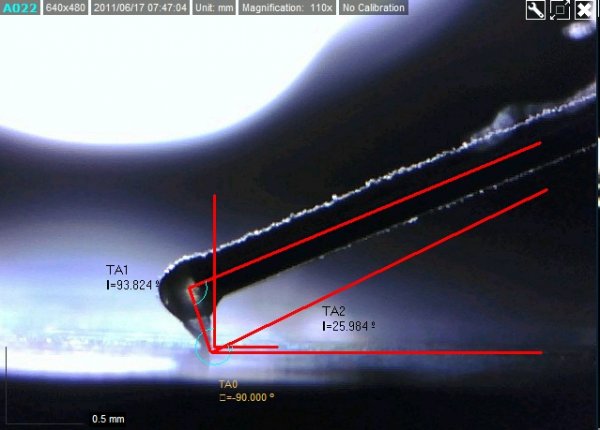
Mine was slightly over 26 degrees at 2.3g, but it seems to vary somewhat from cart to cart. This is my second one, the first was at about 25.5.Lucky are those whose stylus geometry is such that SRA can be set by microscope... Such is not the case with the A90.
This picture is with the recommended tracking force of 2.3g and the arm parallel to the record surface; it's supposed to give us a VTA of 23 degrees - I measure close to 26 (TA2). Notice also how radically the stylus is mounted to the cantilever - nothing that would resemble a vertical stylus to the surface; moreover, the angle between the stylus and the cantilever is 93.8 degrees (TA1). TA0 represents the angle of the rear edge of the stylus to the record surface, but I am not sure how relevant this is - the Replicant 100 is too radical and probably asymmetrical to make any assumptions:
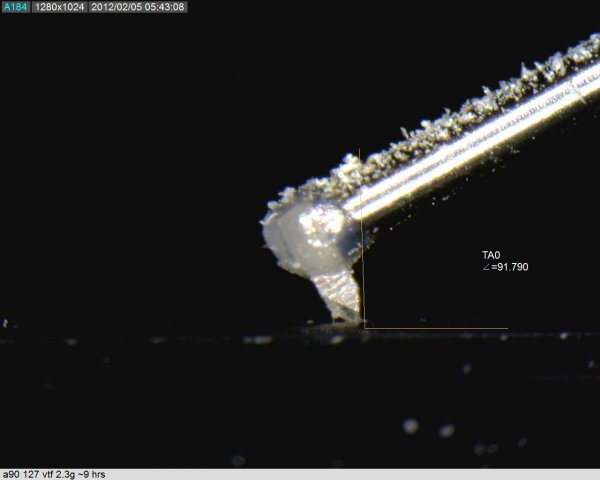
Regarding the SRA, unless there's yet another angle at the very tip which is too small to see with a USB side microscope, I had always assumed the right side of the tip was the actual angle of concern. It seems to conform with tweaking by listening, then checking the microscope.
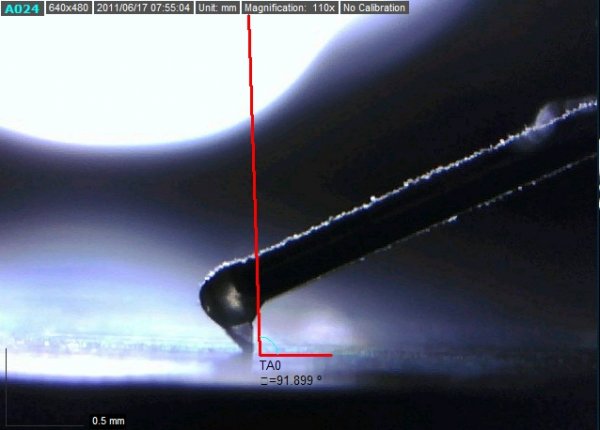
I'm using a Dino-Scope AD413T with the plastic nose piece removed (to get closer, at the expense of smoother lighting). Also using an outrageously priced MS36B semi-articulating stand to hold the scope in a stable enough position to get useful shots. PCGEARS had the best price on both last I looked.Gents, would you mind describing the USB 'scope and software you used to take these pics and measure the angles? Thanks!
I'm using a Dino-Scope AD413T with the plastic nose piece removed (to get closer, at the expense of smoother lighting). Also using an outrageously priced MS36B semi-articulating stand to hold the scope in a stable enough position to get useful shots. PCGEARS had the best price on both last I looked.
The measuring software comes with it, though it takes a little getting used to.
--Bill
I wouldn't have a clue as to calculating it mathematically for an ET2. Yes, I've seen the thread, but somehow I missed the date ranges that had the pictures and explanations. Will have to revisit that.Actually, I made the same assumption as well, so I used the microscope to set vertical (TA0 above) - and magnified with various tools - then based on the effective length of the arm and trigonometry I calculated SRA; the result:
View attachment 2977
I have had numerous listening tests thereafter, up and down, and no other adjustment is as accurate as the mathematically calculated, using Reference Recordings records. The results are actually easily verifiable with Diana Krall's sibilance Live From Paris on ORG. I am sure you have seen this thread...
It sure is. And it can be quite frustrating if you happen to be a little shakey that night. I don't lose the LED's by removing the nose on the 413T, but however you light it, a good back light really helps with detail. Mine broke so I've been doing the most recent shots with front lighting only, which really robs detail.Mine is the 3013T. I am going to get te 413T or higher because I need the higher resolution. I think I have the same articulating stand, and I also remove the nose piece, thus rely on flashlights - overall, it's an arduous process.
I wouldn't have a clue as to calculating it mathematically for an ET2. Yes, I've seen the thread, but somehow I missed the date ranges that had the pictures and explanations. Will have to revisit that.
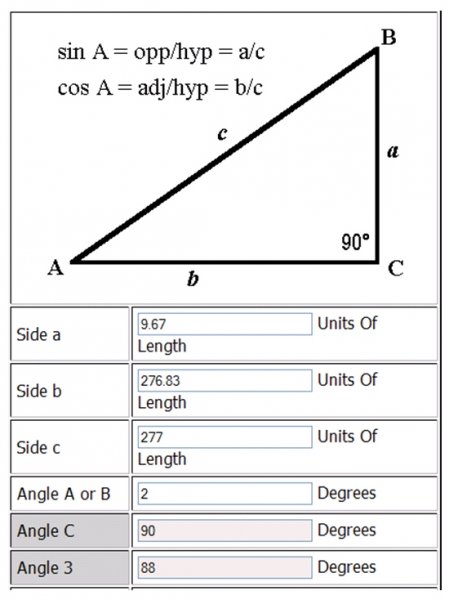
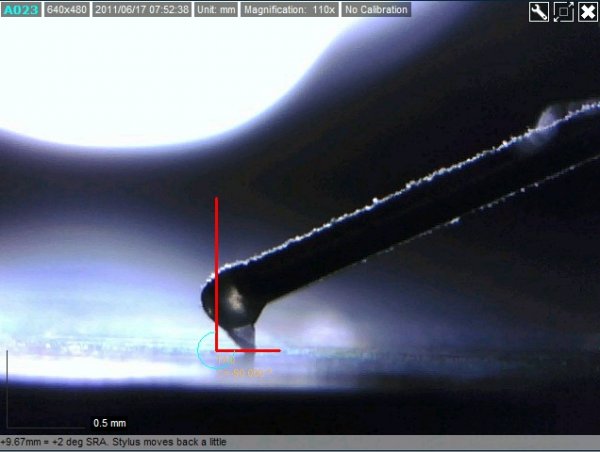
Yes, I discussed this. Did you mean something else?
Ouch!Well there is the 7013 with 5MP resolution at close to a thousand dollars.
There's a problem with step #3 as it pertains to the A90. The two that I have had come no where close to arm parallel for 90 degrees at recommended VTF of 2.3g. To get there, you would need to drop VTF down to the 1.7-1.8g range, or hold 2.3g and significantly tail-up the arm. It only gets worse from that point as the cartridge breaks in. That was why I sometimes wondered if there isn't another hidden tip angle that we can't see with the current level of magnification. But listening tests don't bear that out.So the general idea to using the math approach goes as follows - keep in mind it's really still an approximation, as explained later on:
- Raising the arm to get a specific SRA is really trigonometry
- You start with the arm perfectly parallel to the record surface, and the cartridge already aligned
- You adjust VTF until the stylus is perfectly perpendicular to the record; you really need to use a microscope to assert this as best as possiblest, as we have done above. This step assumes you can get a perpendicular stylus within the recommended tracking range. At this point you have a perfectly parallel arm and 0 degree SRA.
There's a problem with step #3 as it pertains to the A90. The two that I have had come no where close to arm parallel for 90 degrees at recommended VTF of 2.3g. To get there, you would need to drop VTF down to the 1.7-1.8g range, or hold 2.3g and significantly tail-up the arm. It only gets worse from that point as the cartridge breaks in. That was why I sometimes wondered if there isn't another hidden tip angle that we can't see with the current level of magnification. But listening tests don't bear that out.
So what do you fudge (or how) to accommodate this kind of variability?
The rest of your post is excellent but definitely makes my head spin.
--Bill
How do you deal with the different thicknesses of each record ? IME not all 180 gram, 200 gram and standard weight albums are the same thickness in each weight category. All this effort to set VTA yet it probably won't be correct for the next record. I prefer adjusting VTA for every record I play. How do I do this easily and conveniently ? I use a Graham Supreme arm with the built in VTA bubble level. Whatever record I play, I get it dead level and adjust by ear from there if necessary....all within 30 seconds of starting the album side.
| Steve Williams Site Founder | Site Owner | Administrator | Ron Resnick Site Owner | Administrator | Julian (The Fixer) Website Build | Marketing Managersing |






